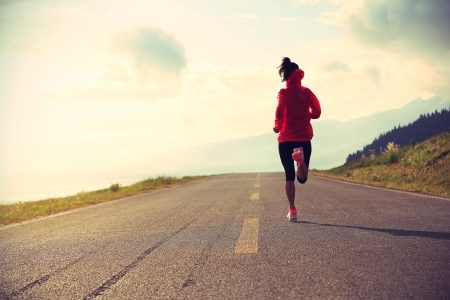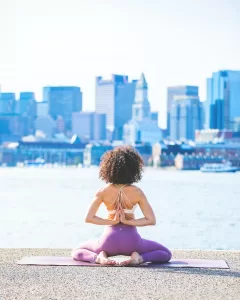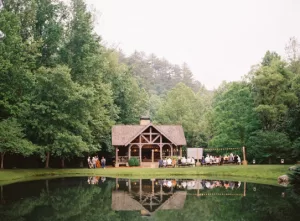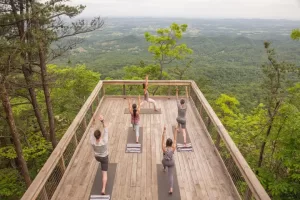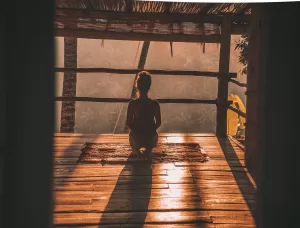No matter the style of your gym, from high-end to minimal, one thing you’re bound to find is a bench press station. This highlights the importance of the bench press for building upper-body strength which has proven effective time and again. As its efficacy is unquestioned and the bench press is already likely part of your routine, you might be aiming to escalate from basic weights to heavier loads. And if you feel like you’ve hit a ceiling with your current benching, there is still much to discover, from refining your technique and trying out different styles to mastering the right gear and safety practices which can help improve your lifting outcomes.
What Is Bench Press and What Makes it Challenging?
The bench press is an exercise that involves lying on a bench and lifting a weight straight up. Both lifting and lowering the weight are performed deliberately slowly which is what makes it so effective. This slower pace helps detect and correct any imbalances in how you engage both sides of your body which ensures uniform muscle activation. However, this reduced speed also makes the exercise more challenging in contrast to the relative ease of quicker lifts. When you lift quickly, your muscles contract powerfully at the beginning of the movement and generate strong initial force. This force propels the weight forward fast enough that it continues moving upward by itself. Then, when you lower the weight quickly, you depend on gravity to assist the descent. This isn’t the case when you reduce speed as you no longer rely on inertia for lifting and gravity for lowering. Your muscles must work harder throughout the entire movement which increases the difficulty of the exercise.
Muscles Worked
The bench press, along with exercises like deadlifting, squats and hip thrusts, is a compound movement that strengthens several upper body muscles, including the chest, shoulders, and triceps. It primarily targets the chest muscles which contract to lift the barbell and stretch as it is lowered. This exercise also engages the muscles at the front of your shoulders. They contract to restrict any forward or backward movement of the arms which helps them move straight upward. Additionally, the triceps are involved in extending the elbows as you push the barbell towards the ceiling.
How to Perform the Bench Press?
Before beginning your bench press routine, you need to properly warm up to prepare your muscles. Start with a general warm-up of 5 to 10 minutes of light cardiovascular activity such as jogging or cycling. These activities increase blood circulation which helps warm up all muscles in your body and makes them more pliable. Follow this with dynamic stretches that target the upper body, including arm circles, shoulder shrugs, and cross-body arm swings. To specifically prepare the muscles used in the bench press, perform a few sets of push-ups or light dumbbell presses. With these warm-up activities complete, your body is well-conditioned to handle the physical demands of bench pressing.
Now ready for the actual bench press, position yourself on a flat bench with your feet planted on the floor and your shoulders pressed against the bench. Grasp the bar with a slightly wider than shoulder-width, overhand grip and fully extend your arms to raise the weight. From this starting position bring the bar down to chest level.
After your bench press routine, engage in post-workout exercises to aid recovery. Start with static stretches focusing on the chest, shoulders, and triceps to relax the muscles you’ve just worked. For the chest, reach your arms behind your back with elbows straight and clasp your hands together. Gently lift your arms upward until you feel a stretch across your chest and hold this position for 20-30 seconds. Next, for the shoulder stretch, extend one arm straight across your chest, place your opposite hand above the elbow, and draw it closer to your body. Hold this position for 20-30 seconds to deepen the stretch and switch to the other arm. Finally, to stretch the triceps, lift one arm overhead and bend it at the elbow to touch the opposite shoulder blade. Place your other hand on the bent elbow and gently press it back to intensify the stretch. Again, hold this position for 20-30 seconds before switching arms.
After stretching your chest, shoulders, and triceps, dedicate five to ten minutes to light cardiovascular activities such as walking, gentle cycling, or a relaxing yoga session. These gentle movements enhance circulation which allows blood flow to transport lactic acid from the muscles to the liver more efficiently. The liver then converts lactic acid into energy or flushes it out of the body which helps reduce muscle soreness and fatigue.
Bench Press Variations
Incline Bench Press
With this variation, the head of the bench is raised to an angle of your choice, typically between 15 and 30 degrees, but it can go up to 70 degrees. Similar to using a flat bench, maintain flat feet and neutral spine position and hold the barbell with a grip slightly wider than your shoulders. Raise the barbell upward, hold it above your chest and flex your elbows to bring it down.
Given this setup, the incline bench press is more demanding than the standard version. In the classic form, lifting a weight vertically means you are directly opposing gravity which pulls the weight straight down. This setup allows you to focus all your effort on countering one force: gravity. In contrast, when lifting at an angle, you not only push against gravity but also sideways. This dual effort increases the complexity because you are managing movements in two different directions simultaneously.
Because of this shift, both the primary and secondary stabilizer muscles are activated. As you push the weight upward, the primary muscles in the upper chest are actively engaged. Additionally, as you also push outward, the shoulder muscles, which are responsible for resisting any sideways motion, become activated. This lateral component adds a level of complexity, yet, the simultaneous engagement of both muscle groups leads to more comprehensive strength development.
Decline Bench Press
For this version of the exercise, you use a bench elevated at the foot end. You can adjust the angle between 15 and 30 degrees and up to 40 degrees for a more intense decline. Once the bench is angled, place your feet under the foot pads at the bench’s end and position yourself so that your eyes align directly under the barbell. Hold the bar slightly wider than the width of your shoulders and extend your arms fully to raise the barbell directly above your shoulders. At the highest point, keep a slight bend in the elbows to maintain muscle tension before lowering the barbell to chest level.
With this exercise so performed, the angle of the bench shifts focus from the shoulders to the lower chest muscles. Normally, the shoulder muscles are optimally engaged when they are perpendicular to the ground. In a decline position, however, the shoulders are more angled compared to the lower chest muscles which are now more perpendicular to the ground. Therefore, these muscles become the primary ones engaged in the lift.
Close-Grip Bench Press
The close-grip variation is performed similarly to the standard bench press but with your hands positioned at shoulder width instead of slightly wider. Because your arms are closer together, the barbell travels a slightly longer vertical distance which increases how far your muscles need to move. As a result, they stretch and contract more and are activated more thoroughly throughout the movement. Moreover, when you use a close grip, your shoulders move at a smaller angle and don’t move as much to complete the lift. Therefore the shoulder muscles aren’t as involved, and the triceps end up taking on more of the workload.
Wide-Grip Bench Press
This bench press variation also follows the standard technique but uses a grip wider than shoulder width. With this grip, your arms don’t have to move the barbell as high from the chest as with the classic version. This might seem like it would make the exercise easier but it actually puts the chest muscles under greater stress. This is because when you lower the barbell to your chest with a wider grip, your arms spread further apart which creates a significant stretch across the chest muscles. When stretched, these muscles are under tension, and they must generate more force to overcome this tension and contract to lift the barbell.
Additionally, when you lower the barbell with a wider grip, the angle between your shoulders and torso increases which leads to a greater stretch in the shoulder muscles. Consequently, these muscles need to generate more force to overcome the tension that this stretch creates.
Dumbbell Bench Press
For the dumbbell bench press, you sit on the bench with a dumbbell in each hand, resting them on your thighs. As you lie back, use your thighs to help lift the dumbbells above your chest. Keep your wrists straight and palms facing forward throughout the lift. This is the starting position where your arms are fully extended, with feet planted on the floor, back firmly against the bench, and shoulder blades pulled back. Pause for 1-2 seconds and lower the dumbbells until your upper arms are either parallel to the bench or slightly below chest level. Once your upper arms are positioned properly, press them back up to the starting point to complete one repetition.
This technique in the bench press focuses on strengthening the muscles in your front chest. When you lower the dumbbells, these muscles stretch and when you press them back up, they contract. Moreover, unlike a barbell where your hands are fixed and movement is limited to a set path, dumbbells allow you to adjust the movement of each arm to lower the weights further down. This increased movement during the lowering phase allows for a more thorough stretch of the chest muscles.
1.5-Rep Dumbbell Bench Press
The 1.5-rep dumbbell bench press mirrors the standard exercise with a unique twist. You start by pressing the dumbbells upward until your arms are fully extended and lower them back down to your chest. Then instead of completing the lift, you push the dumbbells up only halfway and lower them back to your chest once more. Finally, press them all the way up until your arms are fully extended. This cycle of movements completes one full repetition, along with the additional half repetition.
This variation, similar to the standard dumbbell press, targets the major muscles in the front chest. However, the inclusion of the halfway lift extends the duration of each repetition and increases the time the muscles are under tension.
Alternating Dumbbell Bench Press
To perform this variation, lie back on the bench, keep your spine in a neutral position, and hold a dumbbell in each hand. Extend your arms directly above your chest so that the dumbbells are parallel to each other. Keep one arm fully stretched and stationary and lower the other arm to your chest by bending the elbow. Extend your elbow to push the dumbbell back up and begin the same movement with the other arm.
With this variation, the value of the technique becomes evident when considering its benefits. By isolating each arm and working on one side of the body individually, the alternating bench press helps to correct and prevent imbalances in the muscles of the left and right sides of the chest, as well as the shoulders and triceps on each arm. Additionally, since one arm is always extended, the core muscles must engage continuously to maintain body balance on the bench. This constant activation helps strengthen the core muscles and improves midsection stability.
From Free Weights to Machine-Based Exercise
Bench Press vs Chest Press Machine
Both the bench press and chest press machine involve the chest, triceps, and front deltoids which push the weight away from the body. However, as the bench press uses free weights, either a barbell or dumbbells, the load can shift in multiple directions. Thus, the stabilizer muscles, including the core, rotator cuff, shoulder blade, and lower back muscles, activate to prevent the load from swaying or tilting. In contrast, the chest press machine incorporates a weight stack or plate system and handles for pushing forward, both of which are connected to a lever mechanism. This setup makes the movement path inherently stable which eliminates the need for the stabilizer muscles to engage.
Chest Press Machine Variations
Chest press machines are available in different configurations, including flat, decline, incline, cable chest, selectorized, pec deck, vertical, and plate-loaded, each targeting the muscles in distinct ways.
Flat Chest Press
With this machine, you lie down on a flat bench and grip the handles attached to two fixed arms. As you press the handles upward, both arms move together in a fixed, controlled path. This motion primarily targets the muscles in the middle portion of the chest which engage to push the weight upward. The triceps and front shoulder muscles also contribute to extend the arms and complete the motion.
Decline Chest Press
In the decline chest press machine, the bench angles your torso slightly downward relative to your hips. Because of this declined position, the effort shifts to the lower chest muscles which makes them more actively engaged during the press.
Incline Chest Press
In this setup, the chest is angled up relative to your lower body, specifically your hips. This positioning increases the involvement of the upper portion of your chest muscles.
Vertical Chest Press
The vertical chest press machine is designed to press the weight directly away from your chest. Because the motion is straight forward, it primarily engages the middle portion of the chest, as these muscles are responsible for pushing the arms forward.
Plate-Loaded Chest Press
This setup is similar to the vertical chest press machine in terms of the muscles it targets. It involves a seated position where you press the weight directly forward from your chest which activates its middle portion. However, with this machine, you can load plates to adjust the resistance which allows for increased muscle activation.
Cable Chest Press
With this machine, you can either sit or lie on the bench which can be adjusted to flat, inclined, or declined positions. This versatility allows you to target different parts of the chest, including the upper, middle, and lower portions.
Pec Dec Machine
On the pec deck machine, you sit on a padded seat with your back fully supported by a vertical backrest. You hold onto the handles on both sides and bring your elbows close together in the center. This movement primarily targets the middle portion of the chest, as these muscles work to pull the arms inward. It also activates the front part of the shoulders which assist the chest muscles in bringing the arms together.
Selectorized Chest Press Machine
This machine also targets the middle portion of the chest by having you push the handles forward, away from your chest. With this setup, however, you can select the desired resistance by inserting a pin into the weight stack. Additionally, you have the option to perform single-arm chest presses for unilateral training.
Preparing for Your Workout
For optimal performance during a bench press workout, you need to choose the right clothing and footwear. For the clothing, opt for breathable fabrics with open weaves or knit structures. These materials allow air to flow freely which helps bring in cooler air and release the excess heat that builds up during physical exertion. Additionally, breathable fabrics are designed with fibers or treatments that possess hydrophilic or water-attracting properties. This means that when you sweat, these fabrics draw moisture away from your skin and disperse it across the fabric’s surface where it evaporates more efficiently.
Beyond choosing the right fabrics, the style of your clothes impacts your comfort during workouts. The top, specifically, should fit snugly to your body without feeling tight. This prevents any uncomfortable bunching or folding in areas like the armpits, shoulders, or waist which can restrict movement. Additionally, a snug fit helps avoid the fabric getting caught on the barbell or bench which lowers the risk of accidents.
When selecting pants, choose a pair that fits securely around your waist, hips, thighs, and calves without being constrictive. This snug fit minimizes vibration of the muscles which stabilizes them and results in fewer micro-tears and damage during exercise. This reduces the energy required for repair and recovery processes that typically occur post-exercise. Consequently, more energy can be allocated towards performing the exercise itself which delays the onset of fatigue.
In addition to appropriate clothing, the right footwear can greatly improve comfort and safety. To this end, avoid shoes with thick or cushioned soles because they allow only specific parts of the sole, such as the heel and forefoot, to make contact with the ground while the midfoot and arch may not fully engage. Consequently, the weight tends to concentrate only at these contact points which can cause instability.
In contrast, when you wear shoes with a flat sole, the entire shoe makes contact with the ground and your body weight is evenly distributed across the feet which enhances stability and balance. This stability helps maintain correct posture during bench press which reduces the risk of strain or injury.
Equipment Needed
For this exercise, you can set up a bench with either dumbbells or a barbell, and you might also consider a bench press rack for safely loading and unloading weights when using the barbell. Additionally, the Smith machine provides a safe alternative for bench pressing as the barbell moves on guided rails which prevent it from falling off balance.
Bench
When choosing a bench, make sure it is made from high-quality materials like heavy-duty steel or reinforced aluminum which are heavier and denser. This added weight helps anchor the bench firmly to the ground and reduces the likelihood of it moving or tipping.
Additionally, check that the padding is firm enough to provide stable support and soft enough to reduce pressure points and distribute your weight evenly. Such padding typically ranges from medium to medium-firm. Padding should also be thick enough to absorb impact, ideally measuring between 1.5 and 3 inches. The surface should have a non-slip texture that prevents you from sliding during the lift. Examples of such textures include rubberized or textured vinyl, ribbed or perforated patterns, and an anti-slip mesh overlay.
For the dimensions, including height and width, select a bench based on your own height. If you are taller, over 6 feet, choose a bench that is longer, typically around 48 to 60 inches, to comfortably fit your body. It should also have a wider surface, around 12 to 15 inches, to accommodate the wider shoulder span and back. Conversely, if you are shorter, under 5 feet 8 inches, opt for a standard bench length of around 42 to 48 inches which is usually sufficient. If the bench is very long, your weight would be concentrated over a smaller portion, and there is a risk that the bench could tilt or feel unstable. A standard width around 10 to 12 inches is also best if you are shorter as it provides enough space to support the upper back and shoulders.
Lastly, when selecting a bench, factor in weight capacities appropriate for your body weight. If you are under 150 pounds, choose a bench with a maximum capacity of at least 400 to 500 pounds. When your weight is between 150 and 200 pounds, the bench should have a capacity of around 600 to 800 pounds. And if you are over 200 pounds, select a bench with a maximum capacity of at least 800 to 1,000 pounds. These capacities will adequately support your body plus the weights you intend to lift.
Dumbbells
In addition to a bench, you also need free weights, with dumbbells being a lighter option which allows for a more gradual progression in weight. With dumbbells, you have the choice between adjustable and fixed ones. Fixed dumbbells, in particular, are non-adjustable weights that come in sizes such as 5, 10, 15, and 20 pounds. They are ready for immediate use and are suitable if you don’t have time for adjusting weights or are following a structured program where you need to switch weights quickly between sets or exercises. If this matches your workout routine, consider the material the dumbbells are made from, the design of the handles, and the available weight range to find the best fit.
First, the dumbbells should be made from materials like steel or chrome-plated steel which are durable and less prone to wear and tear. Second, check the design of the handles to ensure they have diamond-shaped or straight-line indentations. They create friction against the skin and help prevent slipping when hands are sweaty. Handles with rubber coating are also effective because rubber has a slightly rough or stippled texture which similarly improves friction and reduces slipping from sweat. Moreover, rubber has tiny pores and gaps in its structure which trap and absorb moisture, including sweat.
Lastly, when considering weight range, you want to choose dumbbells that suit your strength level. For example, if you are a beginner, you can start with 5- or 10-pound dumbbells to focus on proper form and gradually build strength. As you advance to an intermediate level, you can increase to weights like 25- or 35-pound dumbbells to intensify your workouts without overwhelming. For advanced lifting, 40- to 45-pound dumbbells per hand will offer the resistance needed to further muscle growth and endurance.
The second option, adjustable dumbbells, includes multiple weight plates that you can add sequentially. This not only allows you to increase the load as needed but eliminates the need for multiple sets of fixed-weight dumbbells which saves you space. With these advantages in mind, there are a few factors to consider to choose the right adjustable dumbbells.
While for the material and handle design you need to look for similar qualities as those for fixed dumbbells, with the adjustable type you should also ensure the locking mechanism is reliable to prevent any accidental loosening during workouts. You can do this by testing various combinations of weights and locking them in place. Shake the dumbbells gently to see if the weights remain secure. Also, look for signs of wear, rust, or damage that could compromise the mechanism’s effectiveness.
Additionally, you want to select dumbbells that offer a wide enough weight range to accommodate both your current strength level and future progression. One option is a 90-pound dumbbell set which includes weights ranging from 2.5 to 20 pounds. This variety enables you to select and combine weights within the same ranges you would use with fixed dumbbells: beginner (5-10 pounds), intermediate (25-35 pounds), and advanced (40-45 pounds).
Barbell
While dumbbells are ideal for smaller, gradual increases in weight, a barbell is a better option for heavy lifting. For bench pressing, specifically, the Olympic barbell is generally the better choice for several reasons. First, the Olympic type is usually made from high-quality materials such as alloy or chrome-molybdenum steel. These are durable and can withstand heavy loads and repeated stress without deforming. Second, Olympic barbells have a 2-inch diameter, larger than standard ones, which makes them thicker and less flexible and allows them to maintain their shape under heavy weights. Third, Olympic barbells provide a secure grip due to their dimensions and knurling. They are typically 7 feet long which gives ample space for a wide range of grip widths. Thus, lifters can adjust their grip to ensure it feels secure and comfortable. Additionally, the knurling, a textured surface on the grip area, increases friction between the lifter’s hands and the barbell and thus offers a more secure hold during lifts.
With these points in mind, you can choose to buy and use a barbell on its own or pair it with a bench press rack for added safety. This rack is essentially a sturdy frame that holds the barbell before and after lifts to ensure it is stable and won’t fall unexpectedly.
As stability is key, when choosing a rack, you should look for one made from high-quality steel or alloy which can withstand significant stress and force without deforming or breaking. Moreover, high-quality steels and alloys are treated to resist corrosion and rust which prevents them from weakening and helps maintain their load-bearing capabilities over time. In addition to material quality, you may want to check the maximum weight capacity of the rack. As a rule, a rack with a capacity of at least 600 to 800 pounds can handle most recreational lifters. However, if you are in the heavier weight range and are lifting the heaviest plates, you will need a rack with a higher capacity such as 900 pounds or more.
Furthermore, you need to ensure that the rack is tall enough to fit your bench comfortably underneath. The rack should also be wide enough to hold the full length of a standard Olympic barbell (7 feet). To securely hold this barbell, the rack should be at least 4 feet wide.
For added security, you can opt for a rack with features such as safety pins or bars designed to catch the barbell if you fail a lift and prevent it from dropping onto you. Additionally, if your workout area is limited, consider a rack with built-in weight plate storage pegs to maximize space efficiency and keep your workout area free of clutter.
Smith Machine
A Smith machine is weight training equipment with a barbell that moves up and down on fixed vertical rails. This fixed path allows the barbell to remain stable and makes it easier to control it. This added safety is beneficial for beginners because they can focus on mastering proper form without the added challenge of balancing the weight. It is also useful for injury recovery as the controlled path of the bar along a straight line prevents improper technique and reduces the risk of compensatory movements that might exacerbate injuries.
Furthermore, the Smith machine allows for a variety of exercises which makes it efficient for full-body workouts in limited time frames and for those looking to maximize their workouts with minimal setup.
If any of this applies to you or are seeking the added safety a Smith machine offers, choose one with a heavy-duty frame that can support a combined weight of 600 to 1,000 pounds. Such a capacity ensures that the machine can handle the weight of the barbell, the plates, and the extra pressure from lifting without wobbling.
The machine should also include an adjustable bench which allows you to set it to various angles such as flat, incline, and decline to target different muscle groups. An adjustable bar is beneficial as well as it allows you to align the barbell path with your body proportions. If you have shorter arms, for example, you can lower the bar while for longer arms you can raise it to suit this extended reach. Likewise, if you have wider shoulders, you should raise the bar to accommodate your broader frame and if your shoulders are more compact you can lower it to suit your narrower build.
For further customization and safety, you may consider additional features such as adjustable safety stops and integrated spotter arms. Adjustable stops allow you to set the barbell at specific heights to catch it if you fail a lift. Spotter arms, in turn, provide a wider, more stable area to catch the barbell which adds safety during heavier lifts.
Safety Tips
Use the Right Weights
Choosing the right weights for bench pressing is key to safe training and varies based on experience level.
Optimal Weights for Experienced Lifters
Seasoned lifters can use heavier weights, about 70% to 80% of their maximum, with fewer repetitions, 8 to 10 per set. Performing a smaller number of reps allows lifters to focus on generating maximal force for each lift instead of spreading effort across multiple repetitions.
Starting Weights for Beginners
Beginners should start with lighter weights, typically ranging from 50% to 60% of their perceived maximum capacity, and perform higher repetitions, usually 12 to 15 per set. This approach allows beginners to focus on refining their technique without the added challenge of heavy weights.
At the same time, individual physical characteristics like body weight, height, and age also impact the starting weight for bench pressing. For body weight, persons who weigh more, over 200 pounds, generally have greater muscle mass and strength potential, assuming their muscle distribution is proportionate and not primarily due to being overweight. Thus, they can start with heavier weights, typically ranging from 65% to 75% of their maximum capacity. Conversely, those with a lighter body weight, under 150 pounds, tend to have muscles that are less developed and less accustomed to handling heavier loads. Therefore, they should start with lighter weights, about 50% to 60% of their maximum capacity so they can gradually build strength without overstressing their muscles.
Height, too, affects how much weight beginners should start lifting when bench pressing. Taller people, usually those over 6 feet, have longer arms and need to push the weight a greater distance which makes the exercise a bit more challenging at first. Thus, they should start with lighter weights, about 50% to 60% of their maximum capacity. On the other hand, shorter people, typically under 5 feet 6 inches, have a shorter distance to move the weight and can start with slightly heavier weights, about 60% to 70% of their maximum capacity.
Age is yet another factor that influences appropriate weight levels for lifting. Younger adults under 30 generally have more muscle mass that supports more intense physical exertion. This allows them to begin lifting weights at about 60% to 75% of their maximum capacity. In contrast, older adults, typically over 50, face declines in muscle elasticity and mass as well as joint health. Therefore, they may need to opt for lighter weights, around 40% to 55% of their maximum capacity.
Additionally, injury history affects the choice of starting weights for the bench press. Those with past shoulder issues like rotator cuff tears, arm injuries such as bicep tendonitis, and lower back problems like herniated discs should start with very light weights, around 20% to 30% of their maximum capacity. Even with lighter weights, those with past injuries should consult a physical therapist or a professional trainer to determine if bench pressing is suitable at all. In case traditional bench pressing is inadvisable, alternative exercises like dumbbell presses, push-ups, or resistance band workouts can help build strength without undue stress on previously injured areas.
Lastly, training frequency influences the initial bench press weights. Persons who train four to five times a week should start with lighter weights, typically around 40% to 50% of their maximum capacity. This is because lighter weights put less strain on the muscles and allow for quicker recovery after each session. On the other hand, those who train less frequently, such as once or twice a week, can begin with heavier weights, around 60% to 70% of their maximum capacity. Heavier weights cause more significant muscle fiber breakdown, and the extra rest days between workouts provide more recovery time to repair muscle fibers.
Monitor Your Limits
As you increase the weight during workouts, you should monitor your technique for signs that the weight might be too heavy. Struggling to initiate the lift or needing a significant amount of effort to get the barbell off the rack indicates overloading. An uneven lift where one side of the barbell moves faster than the other and difficulty maintaining a controlled descent of the bar also suggest that the weights may be beyond your current capabilities. Additionally, if you find it challenging to complete your planned number of repetitions, are unable to finish all sets, or need excessive rest between sets, these could signal that the weights are too demanding. Lastly, if you find that recovery time is increasing, this can be a sign that you may be lifting beyond your current limits.
Watch for Signs of Fatigue and Pain
When bench pressing, certain signs of fatigue and pain can indicate that you are pushing your limits too far. Trembling or shaking in the muscles being worked, for example, signals they are nearing their limit in force production, which leads to involuntary contractions or trembles. You might also experience a sensation of overall heaviness in the muscles during the lift. This is a sign that metabolic byproducts like lactic acid and hydrogen ions have accumulated in the muscles. With this buildup, muscles may feel heavier and harder to move. Additionally, heightened soreness in the chest, shoulders, and triceps suggests that the muscle fibers in these areas have experienced micro-tears that are more severe than those resulting from normal training.
In addition to signs that the muscles are nearing exhaustion, pain when lifting should not be ignored because it can be a precursor to or signal a serious injury. Sharp pains during a lift, for example, can indicate that the muscle fibers are overstretched or torn due to excessive force or improper technique. Pain that feels sharp and localized to a joint could suggest an acute injury such as a sprain or strain in the ligaments or tendons surrounding the joint. Persistent or unusual pain during or after lifting, especially pain that does not ease with typical recovery practices, could be a sign of overuse. This happens when repetitive stress on the muscles or joints exceeds their capacity to recover.
Measures to Prevent Injury
To minimize the risk of injury, you should set the safety bars or pins at an appropriate height just below your chest level. This positioning ensures that they are close enough to catch the barbell if you cannot lift it back up. Whenever possible, bench press with a spotter who can help you lift the barbell and re-rack it if you struggle. If you cannot complete a lift and do not have safety bars or spotter arms, you should know how to safely bail out and lower the barbell. The key here is to control the descent in two main ways. First, maintain a firm grip on the barbell to prevent it from dropping too quickly or unpredictably. Second, press your feet firmly into the ground to engage your legs and core which will help you generate additional force to control the descent of the barbell. Once you have safely lowered the barbell close to your chest or stomach, roll it off to the side.
What to Do in Case of Injury
When dealing with an injury, you should first identify the location and type of pain. Is it confined to a specific area such as the shoulder or arm or does it cover a broader area which indicates the involvement of multiple muscles or joints? Next, determine the nature of the pain which can be sharp, dull, or throbbing. Sharp pain often signals acute injury or damage to tissues like tendons or ligaments. Dull pain usually suggests muscle strain while throbbing pain could point to deeper tissue damage.
Additionally, you should check for any abnormal swelling around the injured area, as it often signals inflammation or fluid buildup and might indicate a strain or sprain. Look for any discoloration or bruising as well, as it can suggest damage to blood vessels or tissues. Once you have assessed your symptoms like this, you will be better prepared to describe them to a healthcare professional.
Common Mistakes When Bench Pressing
Using Excessive Weights
The most frequent bench press mistake is using excessive weights. Overloading the bar not only increases the risk of dropping the weight but may limit your ability to lower the bar all the way down. This means you are not working the muscles through their complete range of motion which results in incomplete activation and less effective training.
Skipping the Pause
Not pausing after lifting the weight off the rack is a common mistake. This rapid transition limits the nervous system’s ability to signal to the muscles and recruit enough fibers to generate force for the descent. By pausing briefly for a second or two, you give your muscles time to engage effectively.
Raising Your Head
Lifting your head off the bench forces your neck muscles to contract to hold your head up which can lead to strain. Instead, you should keep your head on the bench to allow your neck muscles to remain relaxed.
Your Feet Are Relaxed
In the bench press, the weight of the barbell is supported by your upper body, core, and lower body muscles. If your feet are not on the floor or are relaxed, your lower body muscles are not engaged. As a result, your upper body has to bear more of the load on its own which increases the strain on your chest, shoulders, and arms. To ensure even weight distribution, your feet should be firmly planted on the ground, directly under or slightly behind your knees.
Hips Not in Contact with the Bench
During a bench press, the force generated by pressing your feet against the ground travels in a straight line through your legs, hips, core, and upper body. When you lift your hips off the bench, the force can no longer travel in this straight line from the hips to the core. Instead, the lower back, which becomes the next point of contact with the bench, absorbs the force, a task it is not structurally designed to handle efficiently.
Bench Pressing across Age Groups
Youth
For persons under 18, the bench press should not involve heavy weights. This is because adolescents are still growing, and their bones are in a state of development and have not matured. During this period, cartilage forms at the ends of the bones and is in the process of converting into bone. However, this cartilage is not as strong or resilient, and excessive strain from heavy weights can cause damage that may impair proper bone development and affect length and alignment.
Given these risks, young persons should start with an empty bar or light weights to ensure that stress is minimal. Lighter weights also reduce the complexity of the lift and enable young people to concentrate on mastering correct techniques. Learning proper form early helps prevent injuries when they progress to heavier weights later.
Adults
Bones in adults have matured, and they can handle heavier weights better than adolescents. However, the use of heavier weights should align with their level of physical activity. For those with minimal activity, such as sedentary jobs that involve prolonged sitting and little movement, muscles are not regularly engaged and can weaken over time.
Thus, they should start with lighter weights, about 20-30% of their body weight which allows for more reps. Higher repetitions require muscles to sustain activity over a longer period during which fatigue typically sets in. As fatigue increases, the body compensates by recruiting additional muscle fibers to continue the activity. This broader activation of fibers helps improve overall strength in weakened muscles.
In contrast, adults with physically demanding jobs might face different challenges such as muscle fatigue or overuse injuries. Therefore, they may need to adjust both the intensity and volume of their bench pressing to accommodate their already high levels of physical activity. Moderate intensity, using weights that are 50-60% of their one-repetition maximum (1RM), helps reduce the risk of overloading the muscles while still providing an effective workout. For volume, bench pressing should be limited to around 3-4 sets with 8-12 repetitions per set to prevent excessive fatigue. Additionally, bench presses should be performed up to 2-3 times per week to allow adequate recovery between sessions.
In addition to level of physical activity, any history of past injuries to the shoulders, elbows, or back may require changes to both the weight used and the number of reps to avoid making these conditions worse.
For shoulder issues like rotator cuff tears or impingement, for example, the weight should be reduced and the range of motion should be limited. Specifically, using weights around 40-50% of the maximum capacity helps reduce stress on the shoulder joints and surrounding tissues while keeping the muscles engaged. Regarding range of motion, the bar should not be lowered completely to the chest, as this can overly stretch the shoulder joint.
Similarly, for those with injuries like tendonitis and tennis elbow (outer elbow pain from overuse), the range of motion of the arm should be limited. With these conditions, stretching the arm to its full range places additional strain on the already irritated tendons which can increase inflammation.
For those with back injuries such as herniated discs and lumbar strain, using lighter weights lessens the demand on the back to stabilize and support the body during the lift.
Seniors
For seniors, the emphasis should shift away from lifting heavy weights for a number of reasons. First, their muscular mass decreases, and the quality of the muscle tissue deteriorates which makes it more difficult to control heavy weights safely. Furthermore, as metabolic processes slow down, the efficiency of muscle tissue repair decreases which makes recovering from strenuous workouts more prolonged.
Second, as cartilage wears down with age and use, its ability to cushion the bones diminishes which can lead them to rubbing together. This increased friction results in inflammation and swelling which causes joint stiffness over time. When they stiffen, joints’ diminished range of motion restricts the ability to lift heavy weights effectively and safely. Lastly, seniors often experience reduced bone density due to decreased production of osteoblasts, the cells responsible for forming new bone tissue. As a result, the bones become more fragile and prone to fractures, especially when exposed to the stress of lifting heavy weights.
For women during menopause, there are additional challenges that impact their strength training routines. Declining estrogen levels can affect muscle strength which means that weights that were once manageable may now become challenging. Moreover, hormonal changes can affect joint stability which increases the risk of injury when lifting heavier weights.
Given these age-related challenges, seniors should opt for lifting lighter weights they can manage comfortably. Those with some experience in resistance training might consider using weights about 40-60% of their 1RM. Meanwhile, seniors new to exercise or who have been inactive might start with even lighter weights, typically within the range of 20-30% of their 1RM.
Who Should Avoid the Bench Press
Persons with significant rotator cuff tears or shoulder impingement syndrome should avoid the bench press. This is because it requires extensive shoulder movement which can further damage the compromised muscles, tendons, joint, and cartilage.
Those with advanced cases of tendonitis or bursitis should also refrain from bench pressing because these conditions often result in reduced mobility. This can make it challenging to lower the barbell fully which prevents the chest and arm muscles from fully stretching and contracting. As a result, other muscles and joints may compensate to complete the lift, including the shoulders and upper back, which can lead to increased strain and injury.
Acute back injuries like severe herniated discs or significant lumbar strain also limit the range of motion but in the lower back. This makes it difficult to fully extend the back during the lift and it may remain in a flexed or rounded position which adds strain on it and can lead to further injury.
Furthermore, those with recent chest surgeries such as rib resection or open-heart surgery should avoid the bench press due to the impact of chest muscle contractions. The reason is that these muscles, attached near both the center of the chest and the upper arm bone, shorten when they contract to lift the barbell. This reduces the distance between their attachment points and, in turn, the space within the rib cage. This compression can place additional stress on the rib cage or cartilage, particularly if they are still compromised due to recent surgery, and delay the healing process.
In addition, bench pressing should be avoided by persons with uncontrolled blood pressure, cardiovascular conditions such as coronary artery disease and congestive heart failure, and respiratory issues like chronic obstructive pulmonary disease and severe asthma.
Wrapping Up
If the bench press is one of your go-to exercises and already front and center in your weekly routine, you’re in good company. Many rely on it because it is hard to find a move that builds upper-body strength as effectively. And many also find that there is always more to learn. If you are one of them, whether looking to step up from modest lifts to more formidable challenges or are seeking new ways to breathe life into a plateaued routine, consistently honing your bench press skills could be just what you need to keep progressing.
FAQ
Who invented the bench press?
George Hackenschmidt, an Estonian professional wrestler, is often credited with inventing the bench press. In 1899, he performed a precursor to today’s bench exercise known as the floor press. His technique involved lying on the floor and pressing a barbell directly upward from his chest. This position restricted the range of motion as the ground prevents the elbows from going lower once they touch or come close to it.
Over time, as weightlifting and bodybuilding evolved as sports, the equipment improved, and techniques became more standardized, the bench press emerged as a staple exercise in strength training.
How has the bench press influenced other strength training exercises?
The bench press has helped standardize strength training protocols such as proper form and progression of weights which have been applied to other exercises, including cable crossovers and dumbbell flyers.
Bench press vs. push-ups, which is better?
The effectiveness of the bench press and pushups depends on your fitness goals. Bench presses consistently challenge your upper body muscles by lifting heavier weights over time. This makes the exercise suitable for building maximum strength in this area. With push-ups, you also target the upper body muscles, plus the core, but resistance level remains constant since you are only lifting your own body weight. Over time, the muscles adapt to handle this constant load more effectively which contributes to improved endurance.
Bench press vs. dumbbell press, which is more efficient?
In the bench press, both hands hold the barbell and stabilize it together against tilting or wobbling. This coordination means that the stabilizer muscles in the shoulders, arms, and chest are less involved which allows you to effectively target the primary muscle groups. In contrast, with dumbbells, each hand operates independently which requires greater engagement from the stabilizer muscles to maintain control of the weights. This increased demand on the secondary muscles help strengthen them. Moreover, because each arm must independently lift, stabilize, and align the weights, it requires a higher level of coordination which helps develop better muscle synchronization over time.
Bench press vs shoulder press, which offers greater benefits?
Both exercises target and develop different groups of muscles. In bench pressing, you primarily engage the chest muscles to push the barbell away from your chest. The shoulder muscles only help with the pushing motion. With the shoulder press, the shoulders are the main focus because they work to lift your arms from shoulder height to above your head.
Is bench pressing with stable or unstable loads more effective in muscle activation?
Few studies have focused on how muscle activation during bench pressing differs between using stable and unstable loads. One such study sought to explore this by suspending 6kg kettlebells from the barbell and comparing muscle activation in twenty resistance-trained men. Participants performed the exercise at two different weight intensities – 60% and 80% of their one-repetition maximum (1RM). Muscle activity was measured via electrodes attached to key muscle groups: the chest, front and side shoulders, triceps, and upper back. The findings revealed that muscle activation was significantly higher at the 80% load compared to the 60% load and during the lifting phase of the bench press. However, the study concluded that there was no significant difference in muscle activation between using stable and unstable loads. This suggests that the choice between loads can be based on personal preference as both methods are equally effective in activating muscles.
Does the bench press help you lose weight?
By working large muscle groups like the chest, shoulders, and triceps, the bench press helps increase muscle mass. This added muscle burns more calories at rest than fat tissue which leads to weight loss.
When to bench press?
Body functions can vary depending on the time of day. In the late afternoon, body temperature typically reaches its highest point, and heat helps enzymes work more quickly. They are able to break nutrients and produce energy more efficiently which gives muscles more fuel to perform better.
Studies also support the link between the time of day and athletic performance. One study, for example, involved 30 trained men who were asked to do bench presses and back squats in the morning and evening. The study found that their resting body temperature was higher by 0.48°C in the evening, and they performed better at that time of the day. Specifically, they lifted weights 8.3% and 12.7 % faster in bench presses and back squats. Additionally, they reached their fastest speed 16.6% quicker in bench presses and 9.8% sooner in back squats during the evening sessions. Moreover, as they handled heavier weights, they were able to push 47.1% harder in bench presses and 80.2% harder in back squats.
Where to bench press?
The area where you bench press should be spacious, well-ventilated, and brightly lit. Ideally, there should be at least 5 to 6 feet of clearance on either side of the bench and 3 to 4 feet in front and behind it. This setup ensures you have enough space for adjusting weights, re-racking the barbell, and moving around safely. Additionally, the space should have proper ventilation, with air being refreshed 6 to 8 times per hour. This helps remove excess heat, moisture, and carbon dioxide and ensures a constant supply of oxygen. For the lighting, the area should be brightly lit with uniform lighting to prevent shadows and glares which can obscure your view of your body position, the weights, and the bench.



